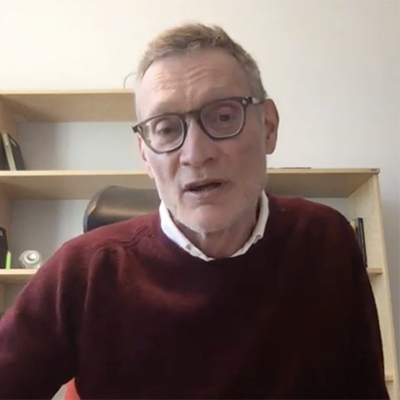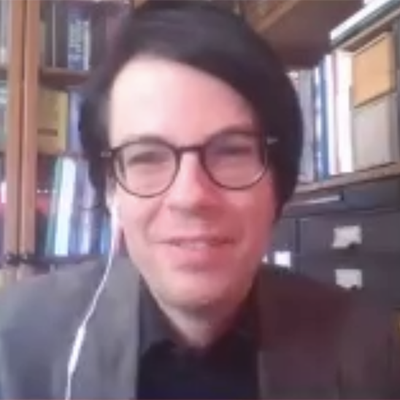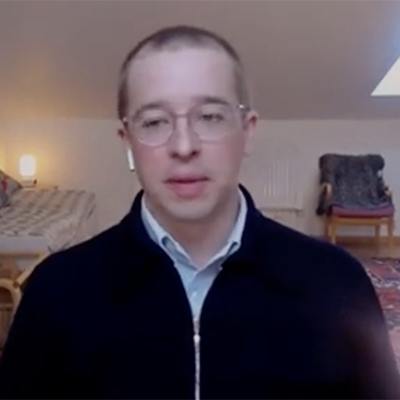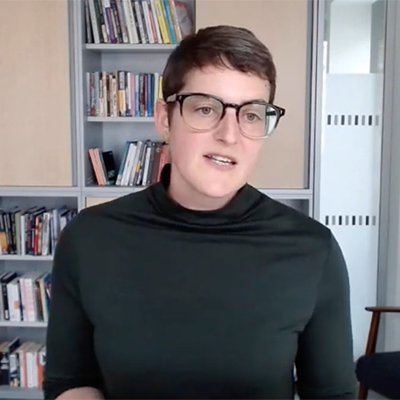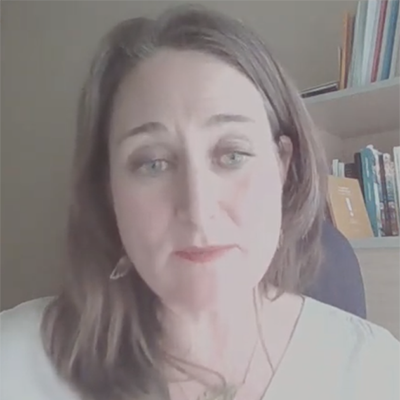Interest in research has soared and the need for effective science communication has never been greater. This year’s Forum for Science Communication (FFF) on 14 April 2021 took place under the umbrella of a tumultuous year full of challenges and opportunities. Participation was at a record high: over 600 science communicators, communication managers, journalists and others working with science communication took part in FFF 2021, representing more than 15 different countries. The Forum’s Facebook group also attracted nearly 1,000 members.
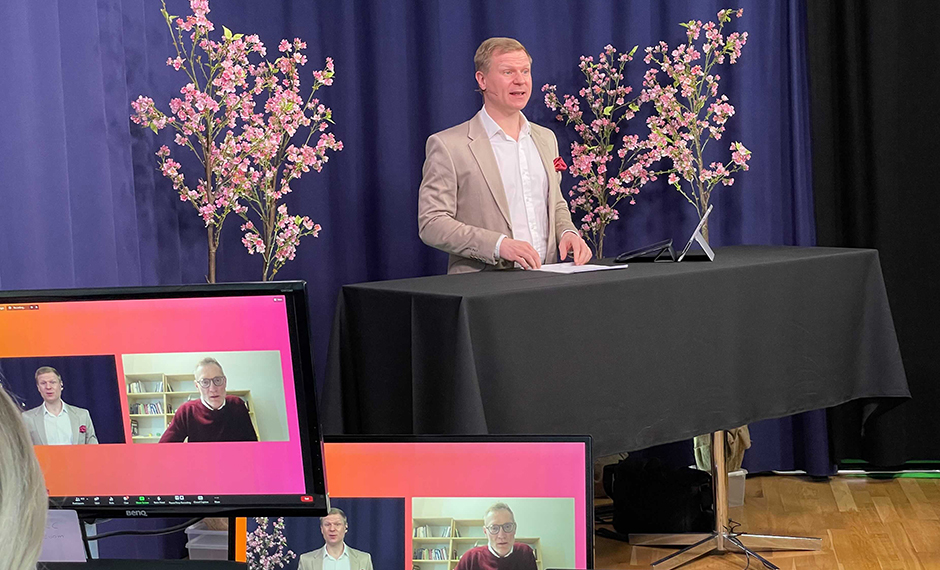
This is why we need science communication!
The Forum started with an explanation by Dick Kasperowski, Professor in the Theory of Science at the University of Gothenburg, on the importance of science communication presented in the form of a historical exposé. Dick began by talking about a meeting held in Uppsala in 1891, when a number of academics gathered to discuss the need for science communication – much like FFF, but with different objectives in mind. Professor of Humanities, Johan August Lundell, highlighted the need for citizens to understand scientific methods so as not to be ”torn apart by all kinds of political, social and religious crazes”. Science could therefore protect citizens from political extremism. Lundell’s colleague, Professor Harald Hjärne, stressed the need for science to be communicated quickly to citizens.
Dick Kasperowski also pointed out similarities between the Social Democrats’ political manifesto of 1908 and the latest Swedish research bill 2020/21:60; namely a strong ambition to effectively disseminate research findings to citizens. He also mentioned that researchers are increasingly highlighting their science communication activities when applying for a variety of positions – even though they do not always term the activities as ”communication”.
Global outlook – how has the pandemic affected science communication?
In a collection of pre-recorded films, colleagues in Australia, South Africa, Brazil and Germany described how the corona pandemic has affected science communication around the world. Jenni Metcalfe at Econnect Communication in Australia said that facts alone are often not enough, but that empathy is also needed for science communication to be effective. Marina Joubert from Stellenbosch University in South Africa said that serious crises can create new opportunities for improved communication about research and the inherent uncertainty of science. At the same time, careful consideration must be given to how early scientific results should be presented.
Luisa Massarani from SciDev.net in Brazil said that everything that is being seen and experienced in Sweden is similar to what is happening in Brazil – but with one important difference: The exaggerations in Brazil are greater and worse, there are more inaccuracies and more disinformation. She said that, in one way, the pandemic has presented huge opportunities for science communication, although, at the same time, it’s also a nightmare: You suddenly wake up and think that what is happening cannot be true.
Many science communicators need more than good intentions to become truly professional, stated Alexander Gerber from Rhine-Waal University in Germany. He emphasised that central to this was having an understanding of the bigger picture, choosing the most promising approaches and being equipped with the right skills, which includes being open to using new tools and methods.
What does the Swedish research and innovation bill mean?
The Swedish Government has recently launched a new research and innovation bill for 2021-2024, which puts extra focus on science communication and public engagement. Klas-Herman Lundgren, Political Advisor to Matilda Ernkrans, the Swedish Minister for Higher Education and Research, spoke about the government’s view of science communication. He said that one thing the government is trying to do in the research bill is to clarify the importance of collaboration between science and society. Greater interaction, dialogue with the public and citizen science are some ways in which to engage with the public. By using these approaches, the government hopes to reduce the amount of disinformation and questioning of scientific facts.
Heads of Communication at three Swedish universities were then asked to reflect on the content and implications of the research bill. Sara Arvidson from Örebro University felt that what was missing was HOW to get better at science communication and thought that the incentives are not strong enough. Ingrid Perssonfrom Malmö University agreed and pointed out that academia has a central role in an increasingly polarised world where democratic values are being challenged. She stressed the importance of collaboration spaces for researchers and communicators, as well as keeping abreast about what is happening in the media landscape and ensuring broad stakeholder engagement when it comes to tackling society’s challenges. Kenneth Wall from Södertörn University felt it was particularly positive that increasingly more focus was being put on societal engagement, and that from an outside perspective it is a key part of a university’s raison d’être. In addition, he thought that universities should collaborate more on communication instead of competing to disseminate research news.
How do you communicate during a crisis?
After interactive discussions using the Mentimeter tool, participants were given insights into crisis communication by Susanne Karregård from the Public Health Agency of Sweden, and Teresa Palmquist from the Swedish Civil Contingencies Agency. When Covid-19 struck, the Public Health Agency was able to utilise pandemic crisis management plans developed in the wake of the swine flu in 2009. Lessons highlighted from the pandemic were that accessibility and collaboration are key factors and that communication during a pandemic should be characterised by empathy and respect, as well as clear explanations about what individuals can and should do to avoid the spread of infection and relieve symptoms. Key words are openness, accessibility, responsiveness, flexibility, collaboration, coordination, continuity and recognition. For the Public Health Agency, it was a major change to their communication strategy as the agency’s main target group is usually decision-makers, but suddenly became the entire Swedish population instead. Traffic to the authority’s website increased tenfold and communicators had to work with messages that were difficult to communicate and sometimes visibly contradictory.
Teresa Palmquist from the Swedish Civil Contingencies Agency spoke about the task assigned to the authority, which was being carried out in collaboration with the Swedish Public Health Agency and the National Board of Health and Welfare. The task was to ensure that the authorities’ information on Covid-19 was coordinated and clear and utilised effective information channels. Daily press conferences, collaborative working and widespread dissemination of information were three ways in which they approached the task. The authority collaborated with the business community as well as associations, religious communities, and many different types of civil society organisations. Spotify offered to send out information to all its subscribers and Swedish Civil Contingencies Agency also sent out a text message containing information to every mobile phone in Sweden. Lessons that the Swedish Civil Contingencies Agency has learned are that in crises there is a huge need for information and coordination, and that the responsible authorities need to create working methods and organisational forms to manage this. You must also be prepared for situations, attitudes and communication needs to change over time. In addition, the authority has learned the importance of working in an agile way, thinking objectively and constantly testing, evaluating, correcting and then testing again.
How do humans work and what works?
Niklas Laninge from PBM Sweden spoke about the behavioural changes that have and haven’t worked during the corona pandemic. When the purpose of communication is to change behaviour, the challenge must be broken down into smaller parts, before it is possible to develop behaviour-changing communication efforts that need first to be tested on a smaller scale, then evaluated and scaled up. Niklas highlighted some principles: 1) Develop clear instructions. 2) Use recognisable people who are affected if the behaviour does not change. 3) Share what others think about the behaviour that you want to achieve. 4) Appeal to group affiliation. Avoid vague advice or recommendations, stereotypical messages or having political representatives make general statements such as ”we all need to step up”; as these can backfire.
The role of research communication in society
Sarah R Davies from the University of Vienna spoke about the value of science communication in society. Sarah said that as a science communicator, you must first ask yourself what do you want to achieve: Is it to change behaviours or to share a sense of wonder? Or is it perhaps to encourage young people to study science? Her own rhetorical answer was that science communication has many different roles, but that the purpose basically relates to the type of society we want to create together.
Science communication in the future
During the afternoon, participants could choose between three parallel sessions around science communication in the future:
- Community engagement and the role of universities, with Paul Manners, National Co-ordinating Centre for Public Engagement, NCCPE, and Lena Lindhé, University West and Unilink.
- Citizen science – the democratisation of science, with Björn Källström, Gothenburg Marine Biological Laboratory, and Teresa Cerratto-Pargman, Stockholm University.
- Hur AI kommer att påverka vårt arbete, with Mikael Hansson, The Wallenberg AI Autonomous Systems and Software Program – Humanities and Society (WASP-HS), and Emma Engström, WASP-HS, Institute for Futures Studies.
Future trends in science communication
What are the trends in science communication? Brian Trench, chairman of the global network Public Communication of Science and Technology, PCST, noted that during the pandemic, the public has been exposed to science in the making, which creates completely new implications. He is curious about the consequences when we return to a “normal state” after the pandemic and also noted that public confidence in science has remained stable or perhaps even increased during the pandemic.
Annette Klinkert, Executive Director of Eusea, the European Science Engagement Association, stated that digitalisation was first seen as the optimal solution for all events and meetings during the pandemic. She said that the pandemic has shown that global challenges have more than a technological dimension and that the psychological dimension is important too. In the future, more disciplines will be needed to be able to understand an increasingly complex reality, she said. As science communicators, we must be self-critical and science communication needs to find new roles in a developing society.
James Pamment, a senior lecturer at Lund University, noted that communicating uncertainty is undoubtedly a trend that is here to stay. Ongoing research always involves a risk, and is a real challenge for science communicators now and in the future. He also noted that there is sometimes an aggressive tone in social media around research-related news.
SciComm Project of the Year Award
Thirty inspiring science communication projects had been nominated for this year’s SciComm Project of the Year Award. The 2021 award was presented by Anna Maria Fleetwod, advisor at the Swedish Research Council, to ”Magnotion – Orientation by Magnetism”. Upon receiving the award, Eric Warrant from Lund University, together with producer Peter Lång from Scen3, explained how the project came about following joint discussions. Short films about each of the nominated projects can be viewed on the FFF website.
Watch all of the 30 communication projects!
Dialogue and public engagement
In her closing comments, Jenny Björkman from the Riksbankens Jubileumsfond highlighted the complexity of science communication. It is often NOT about selling ‘sexy’ messages but rather about communicating the uncertainties surrounding current research. Jenny stressed that researchers and science are looking for what is uncertain, in order to discover more. Dialogue and public engagement are therefore key components of science communication in the future.
The Forum for Science Communication is organised by the Swedish Research Council for Health, Working Life and Welfare, the Swedish Research Council and Vinnova, together with Mistra, the Ragnar Söderberg Foundation, the Swedish Foundation for Humanities and Social Sciences, the Swedish Foundation for Strategic Research, the Knut and Alice Wallenberg Foundation, and VA (Public & Science), in collaboration with the Gothenburg Science Festival.


